YouTube India Obsession

A growing number of foreign travel vloggers are infatuated with the diversity, history, architecture, adventure, charm, and warmth of the people—and, of course, the surprises at every corner. From heartfelt connections to cultural discoveries, vloggers are enjoying India while also taking their fans along virtually through immersive storytelling.
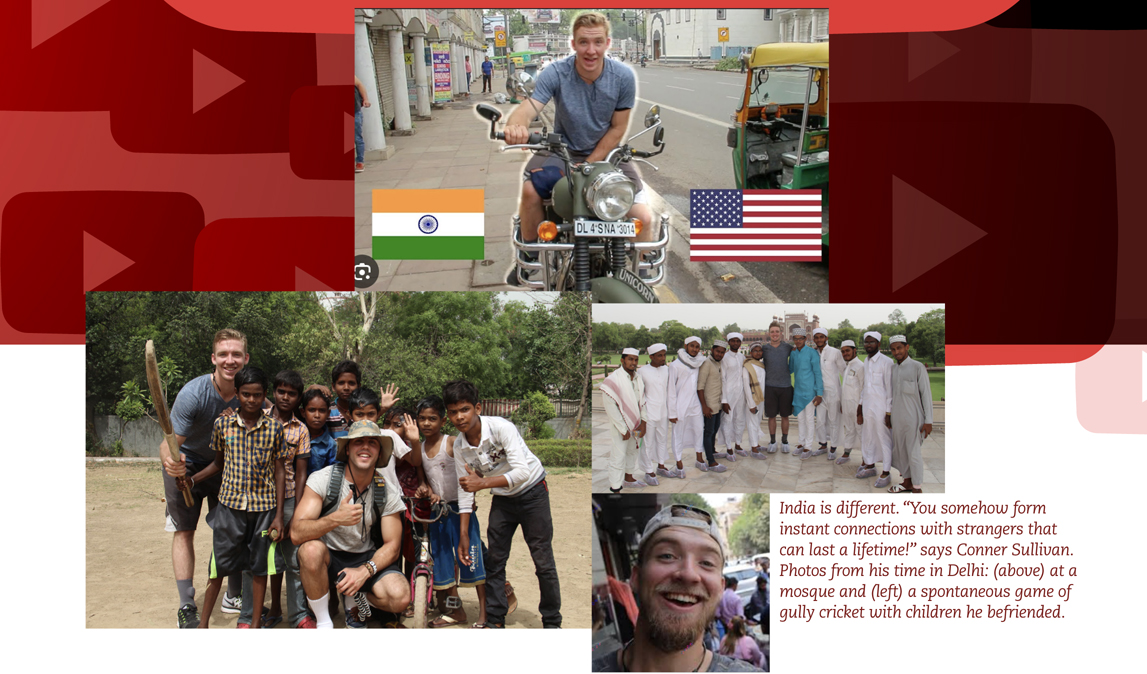
In the summer of 2019, Conner Sullivan, a travel vlogger from Orange County, California, traveled to India, where he connected with the locals, played gully cricket with young boys in the streets of Delhi, talked to the cows on the roads, and made many new connections. But the highlight of his trip remained buying a brand-new Royal Enfield motorcycle, colloquially known as the “bullet.” An avid biker, Sullivan dreamt of zipping across the U.S. via Route 66 on his Indian bike.
At the end of his trip, Sullivan realized that shipping his bike thousands of miles to his hometown would cost him an arm and a leg! So, he left it with an Indian family in Jaipur, whom he had met just days earlier. He says, “The family is taking care of my bike and whenever I go to India next, I look forward to exploring more of India on my bike.”
The idea of leaving an expensive possession in a foreign country with the hope of finding it back may seem too optimistic to many. But Sullivan is positive that he would find the family and the bike—just as he had left it. He admits that he may not take such a risky step in any other country. “But India is different,” he says with a wistful nostalgia. “You somehow form instant connections with strangers that can last a lifetime!”
Videos do what travel tomes can’t
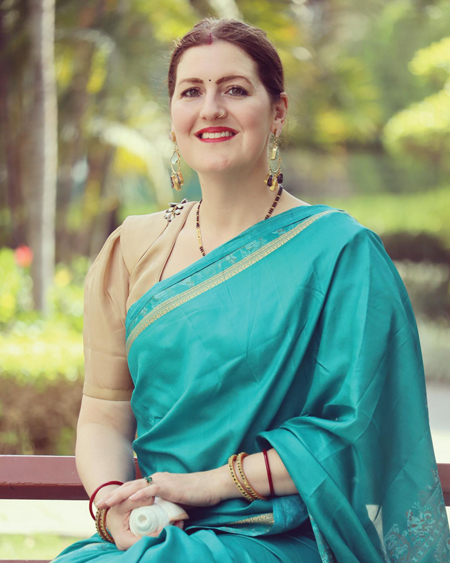 India, second only to Africa in genetic diversity, has always fascinated the West. Tomes have been written about everything—from India’s luminous Mughal architecture to its confluence of the oldest world religions. Contemporary travelers have raved about India’s burgeoning society now emerging into a major economy, and documentaries have been made that depict its megadiversity.
India, second only to Africa in genetic diversity, has always fascinated the West. Tomes have been written about everything—from India’s luminous Mughal architecture to its confluence of the oldest world religions. Contemporary travelers have raved about India’s burgeoning society now emerging into a major economy, and documentaries have been made that depict its megadiversity.
But in recent years, an emerging number of content creators have brought to life a side of India that may not have come across in tomes of literature. Indian American author of over a dozen books, Monica Saigal, who has captured the essence of India in many of her books, says, “Books and digital platforms complement each other beautifully. For instance, readers of my books often tell me they’ve gone to YouTube to explore the places I described in the book. These layers—books sparking curiosity and digital media providing a visual or experiential follow-up—create a dynamic relationship. While books offer depth and intimacy, digital platforms make India’s farthest corners accessible, bringing its vibrant culture to global audiences almost instantly.”
[Right] Jessica Kumar came to India for work in 2006, loved it, and decided to make it her home. She married an Indian and is now a Hindi tutor.
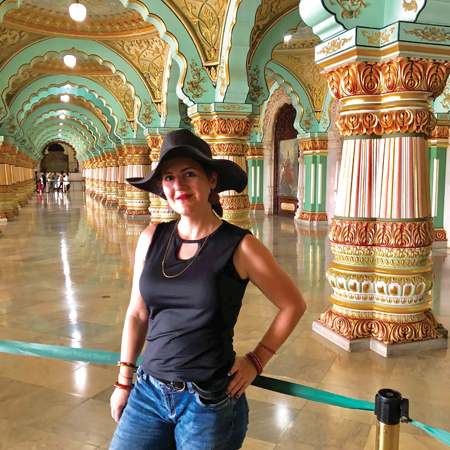
“The YouTube generation has fundamentally transformed how we consume content,” says Saif Shahin, an assistant professor of Digital Culture at Tilburg University in the Netherlands. The rise of YouTube in the 2010s heralded the emergence of a democratic era of digital content creation. Vloggers, content creators, and influencers began offering virtual tours of the many different countries they were visiting to thousands of their followers. Going into the far corners and deep interiors of countries, these intrepid travelers showcase everyday life, vlogging their daily experiences. This raw video footage, often captured on 4K video, of real-time interactions with locals—shop owners, strangers on the street, policemen, barbers, street food vendors, and more—gives viewers the experience of actually having traveled with them.
[Left] Jessica Kumar at the Mysore Palace in Mysuru, Karnataka.
Because of its immense potential, travel vlogging soon became a financially rewarding industry. India, with its massive variety of experiences, ranging from endearing to adventurous, has gained much popularity as a travel destination with a difference.
What is the allure that draws vloggers to India?
While chronicling their journey to the peaks of Ladakh, the beaches of Goa, and the havelis of Rajasthan, the strongest memory that seems to stay with most Western visitors is the din of the crowded streets and the conflicting comfort amongst the chaos.
Jessica Kumar first came to India for work in 2006 and now calls the scenic state of Uttarakhand her home. What struck her the most was the emotional understanding that was so readily available and often came from unexpected quarters. “When I was living in India on my own during my internship, my dad came over to visit me. The evening after he left, I was teary-eyed and emotional and missed my family. A lady who lived nearby observed me and instinctively asked, ‘Papa chale gaye?’ (‘Your father has left?’) She comforted me, brought me to her home, and offered me food as we chatted.” Persuaded by the warmth of people, Kumar decided to live in India. She now hosts the Invisible India podcast and is the founder of Learn Hindi Anywhere.
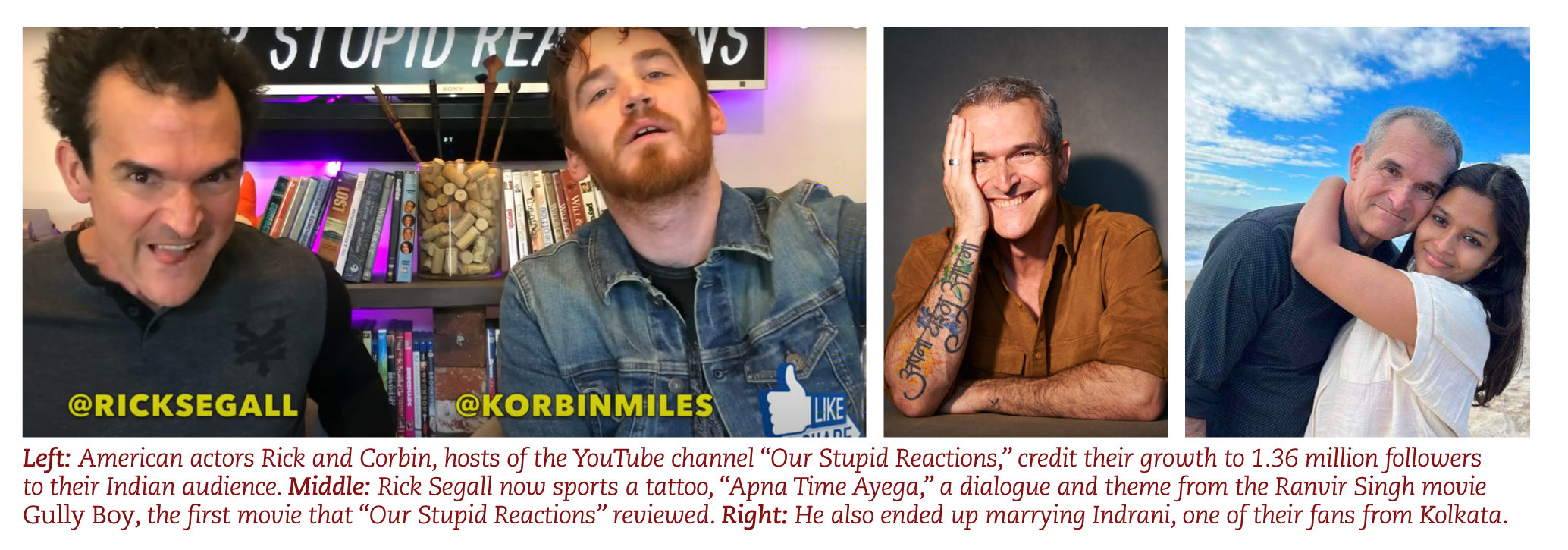
Conner Sullivan, who runs a travel TV show in Germany besides documenting his travel stories on YouTube to his 963K subscribers, says, “From the moment I sit in a taxi, just chatting with the driver, I discover so many layers to the country.” In one such interaction, Sullivan befriended an autorickshaw driver who invited him to his home, a modest shanty in Delhi’s predominantly poor neighborhood of Sultanpuri. “It was tough to see people living under tarpaulin roofs with just a water outlet in the kitchen that also doubled up as a bath area. But despite their apparent poverty, these people were too eager to offer me food and be hospitable,” says Sullivan, remembering the gracious encounter.
Texas-based author and social commentator Dan Mayur has written several books about India, including Global Nomads and Mumbai to Stockholm via New York. A U.S. citizen for over thirty years, Mayur now travels to a new part of India every few months to witness its rapid changes. He believes that travelers keep discovering a new side of India because there is not just one India but many Indias based on income, education, language, regional, and religious diversity.

India, via Bollywood
While most content creators came to India fascinated by stories about its ancient civilizations or colonial past, others have stumbled upon a different, so-far-unexplored side of India. American actors Rick Segall and Korbin Miles, run the YouTube channel, “Our Stupid Reactions,” where they started out reviewing Bollywood movies. Now they include reviews of many things Indian—food, celebrities, politics, and more.
So, how did Bollywood happen to two white guys, who hadn’t been to India, spoke no Hindi, and had never seen an Indian movie? Rick Segall says, “When we started, we focused on American cinema. Then, one day in 2019, one of our followers from India asked us to review Gully Boy. Skeptical, we began watching it. But both of us were shocked. The movie busted every single stereotype we had about Bollywood. We were taken aback by the depth, story, cinematography, and acting! We were stumped by this elevated artistry.” Seagal was so taken by this film that he ended up tattooing “Apna Time Ayega,” (“My time will come”)—an overriding aspiration of the protagonist in the movie.
Today, the duo reviews not just Bollywood movies but also Tollywood and other regional Indian cinema and has interviewed stalwarts like A.R. Rahman, Nawazuddin Siddiqui, Anurag Kashyap, Prabhudeva, and many more A-listers in Indian cinema. Since then, Segall has visited India multiple times. He admits they had envisioned India with the same stereotypes they had about Bollywood—cheesy, overdramatic, and confusing. “But the truth could not have been further from our perception,” he added.
A filmy type of love affair
When Rick Segall first visited India in 2019, he was focused on getting to know more about the Indian entertainment industry. During his trip, he also met Indrani, a follower of their channel from Kolkata who had been chatting with him after she saw his review of Gully Boy. He says, “When I met Indrani, it further broke my other stereotypes about Indians. She was so well-read and was so aware about happenings in the U.S. and the world. We bonded over many shared interests, and I was gobsmacked to know that she grew up watching the same American shows that I did.”
India and Bollywood played a serendipitous role in Segall’s life, and he fell in love with Indrani. The two courted each other through long distance and Covid restrictions, and once Segall could travel to India again, he tied the knot. He says, “Until a few years ago, I could never imagine that I would watch Indian movies for a living and marry an Indian, but today, that’s the story of my love affair with India!”

“From staying in Kashmiri houseboats to having sweat-soaked nights sleeping in non-AC Bihari ashram rooms, everything has been an experience,” says Benjamin Jenks who has traveled to all of the Indian states and vlogs about it on his YouTube channel “American in India.”
The peaks and the valleys
Benjamin Jenks is a YouTuber who has lived mostly in India since 2018 and runs the channel, “American in India.” He says, “I have visited every single state in India. From staying in Kashmiri houseboats to having sweat-soaked nights sleeping in non-AC Bihari ashram rooms, everything has been an experience. Among the real highlights have been a 15-minute hike to Lachen Palkar Palace in Leh. Built in the 17th century by King Sengge Namgyal, this former residence offers breathtaking views and a glimpse into Ladakh’s rich history.”
[Left] Jenks likes to interact with the local families. He is seen here with a host.
Talking about his worst experience, he shares a sentiment that most other foreign travelers also relate to. He says, “My worst experience was in Bihar, but not for the stereotypical reasons. I went to Bodh Gaya, where Buddha achieved enlightenment under the Bodhi Tree. The Mahabodhi Temple, a UNESCO World Heritage site, is a popular tourist destination. However, I faced more harassment than usual from rickshaw drivers and pushy guides. Even the Buddhist monks had a go at me with overpriced tours and aggressive upsells. The place is so small and touristy that it is difficult to escape the hustlers.”
Dan Mayur says, “Despite the vibrancy of its economy, the most important thing India needs is change.” Acknowledging the pervasive corruption, he says, “The eagerness to declare victory and euphoric celebrations of a shining India seem premature if these quirks are not worked around.”
Throwing caution to the wind?
An overarching concern among visitors to India remains the issue of safety, especially for women travelers. How do so many Western content creators navigate India with this constant security scrimmage? Chantal Patton from Canada, who runs the YouTube channel, “Growing Up Without Borders,” has lived in India for months with her three teenage daughters. These four white females have traveled extensively in India, so Patton is exceptionally qualified to address the issue of safety in the country. She says, “When we first visited India, we were definitely concerned. There is so much online that warns you to be careful if you are a woman in India. We still decided to go because my girls have been traveling with me ever since they were 5,7,9.” Years of global travel have made the Pattons prudent enough to avoid certain sticky situations. Chantal admits that they are careful when it comes to things like not letting the girls travel alone in a cab. “But surprisingly, apart from usual tourist traps that you encounter everywhere, whether you are in Italy or India, we have been lucky not to have found ourselves in any difficult situations.”
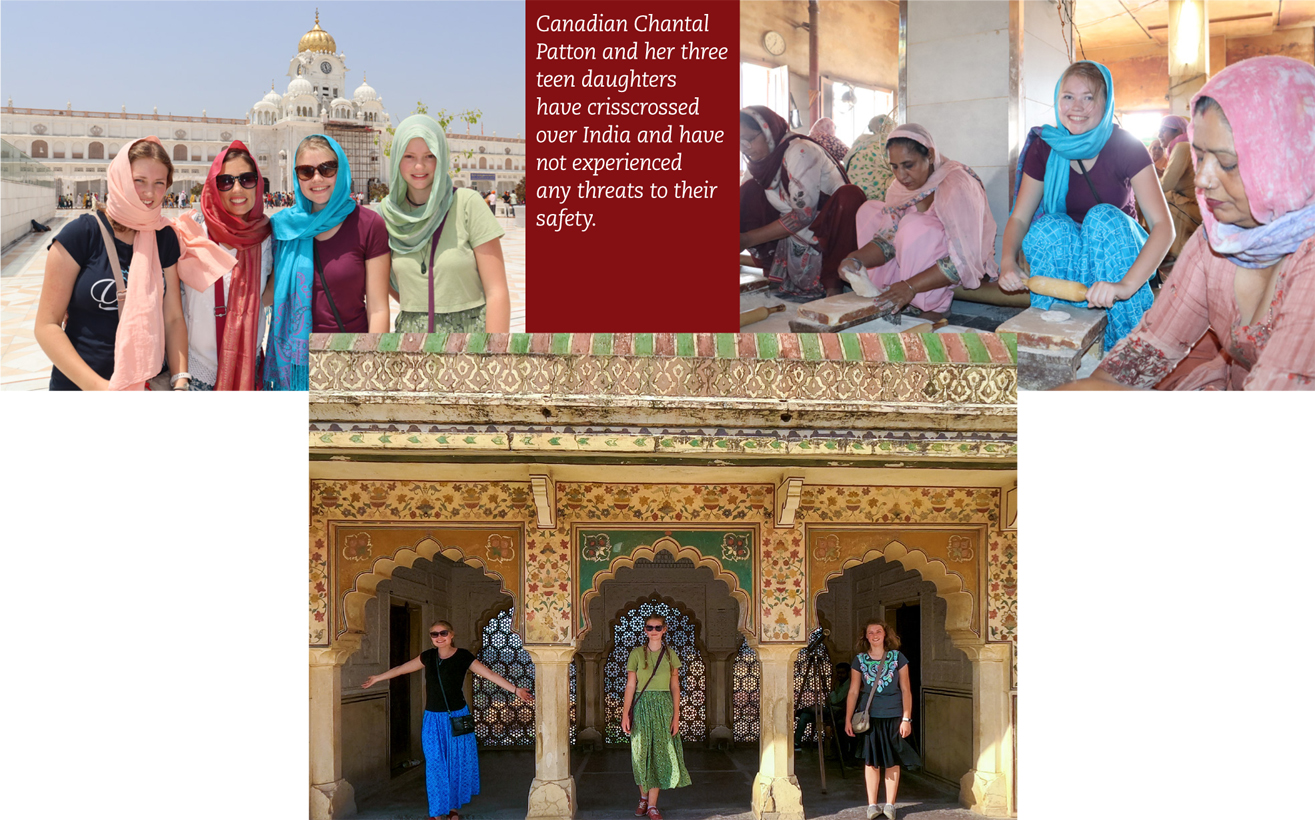
Mariellen Ward, a Canadian blogger who runs the travel site Breathedreamgo.com, made India her home in 2018. She has seen the concerns grow from bad to worse. She says, “When I was first planning to travel to India in 2004-05, I was very concerned about a lot of things! But my safety as a woman wasn’t a big worry for me as the media didn’t focus on it back then. Everything changed after 2013 and the Delhi Gang Rape. Since then, there has been a spotlight on women’s safety in India. I think it’s great that women’s safety has become a concern, and that it’s getting the attention it deserves. However, the downside is that a lot of negative stereotypes have arisen, and there is a lot of fear-mongering in the media about safety— especially for female solo travelers.”
Kumar, who lives and works in Rishikesh, a small city, admits that before she came to India, it seemed like a very challenging place to her. She says, “I felt that it was the deep end of the swimming pool. I was not sure if I was ready to swim in it, but I took the challenge and loved it.” Kumar admits that during the initial years, she ensured she was with trusted people around her. She says, “What bothered me was being questioned as a female all the time while living here all by myself. Even though I lived with other girls and my family visited me many times, people just couldn’t take it.” She adds, “Sexual harassment is something that happens to many, and I had my fair share while in India, even while wearing a very conservative dress. People just saw a white person and thought that they could behave badly, and that was very difficult. But this was only during the initial phase.” On what kept her going, Kumar says, “I will never forget the people around me who have been super helpful.”
The Pattons, too, found affection in places they did not expect. Chantal recalls a memorable moment when the family decided to travel to Pakistan via the Indian land border. She says, “Even though we were aware of not-so-warm relations between the two countries, we took a leap of faith. Surprisingly, the immigration officials on both sides were extremely hospitable. When we were returning to India, at the border crossing, one of the immigration officials asked us why we had gone to Pakistan. I replied jokingly, ‘Wahaan paranthe bohot achhe hote hain’ (‘The flatbreads are yummy there’). He smiled while stamping my passport and replied, ‘Hamare yahaan bhi paranthe bohot achhe hote hain. Aap kha ke dekhiye’ (‘We, too, have great flatbreads. You must try some’).
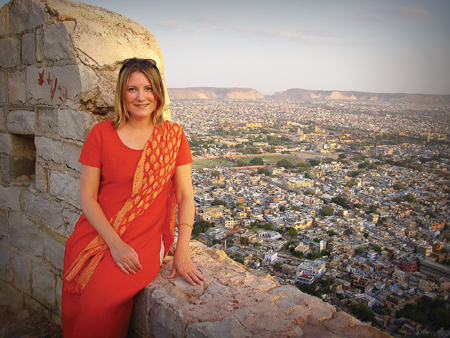
Mariellen Ward, a Canadian blogger, after finishing a Yoga teacher training in Toronto in 2005, felt compelled to go to India. “It was as if I could hear a voice—India was calling.”
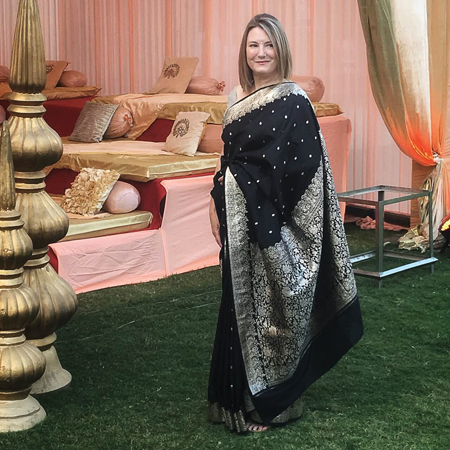
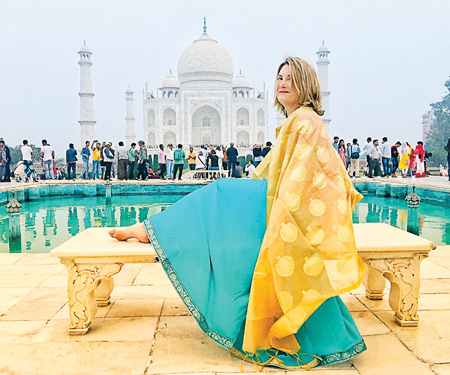
A land of possibilities
Many content creators also discovered life-altering stories in India. Shahin, the professor of digital culture, says, “Twenty years ago when I told people in Europe or the U.S. that I am from India, they would reply that they hoped to visit Goa or see the Taj Mahal someday. Their knowledge of India was very cursory. India was very much an exotic place for them. But it’s different now. Many people know a lot more now. Their knowledge is deeper than what you would get from a travel guide. Many have found YouTube or Instagram influencers who share their everyday life in India.”
Offering a personal example, Shahin says, “Recently, I met a Dutch university student who spent a few months living in a small village in Bihar with a group of missionary workers. Once every two weeks, they would visit Patna, the capital city, to watch movies or buy Western snacks. For me, who was born and brought up in Patna, this was a new way of looking at my city through the eyes of a foreigner.”
Truly making India home
Today's travelers, with smartphones and smart gadgets, relay everything—from the mood of the moment in a specific part of India to what’s cooking on the streets. This may seem like a dream job, but a lot of hard work and sacrifices go towards making a new country your home. And many influencers have gone that extra length to learn the nuances of a new culture while embracing the challenges that come along.
Andrew Hicks, a popular American YouTuber, lives in India and is known for his fluency in Hindi and Bhojpuri. Earlier this year, he also received the National Content Creators Award from the Indian Prime Minister Narendra Modi. Despite his mega popularity, Hicks admits that one of the things he finds hard in India as a comedian and a public figure is that he has to be a lot more careful about what he says, what he does, and where or who he is seen with. He says, “There is a bit more pressure. I have lived in India a long time but I am an American and we have a less conservative culture. In the U.S., I don’t hesitate to say or do anything in public. In India, I have to take care that I am not offending anyone or the culture.”
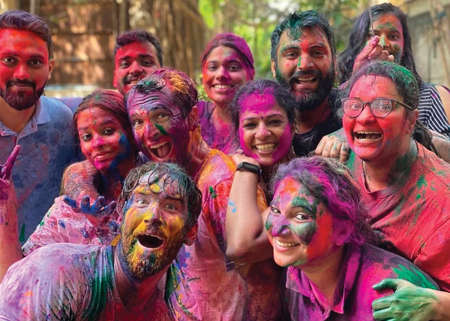 Ward, the Canadian blogger, first went to India in 2005 after finishing a Yoga teacher training in Toronto. She says, “I was recovering from depression, and while I was in training, I suddenly felt compelled to go to India. It was as if I could hear a voice—India was calling.” She adds, “Over the years, I returned to India about 12 times and finally moved here in 2018. In 2019, I started my custom tour business and called it India for Beginners. We focus on helping people who have never been to India travel safely. We offer a helping hand to women and solo travelers.”
Ward, the Canadian blogger, first went to India in 2005 after finishing a Yoga teacher training in Toronto. She says, “I was recovering from depression, and while I was in training, I suddenly felt compelled to go to India. It was as if I could hear a voice—India was calling.” She adds, “Over the years, I returned to India about 12 times and finally moved here in 2018. In 2019, I started my custom tour business and called it India for Beginners. We focus on helping people who have never been to India travel safely. We offer a helping hand to women and solo travelers.”
[Right] Rick and Corbin enjoying Holi in India.
When Kumar decided to return to India to live permanently with her husband and in-laws, one would believe she would have made a lot of adjustments. She admits that in the West, people do not even know of the possibility of living in a joint family because that concept does not exist. She says, “My in-laws are very traditional, but they are also very understanding. In fact, I was the one who advocated for living in a joint family as I am big on multi-generational families.” Jessica also worked towards building a new career that surprised many. She runs online Hindi classes. Most of her students are expats looking to relocate to India for work or relationship. A lot of her students are also second-generation Indian-origin kids in America who want to know their roots better.
Mayur summarizes the appeal of India to Westerners: “Say what you will of India, but it represents a five-thousand-year-old ancient civilization with history, culture, and traditions like no other. And perhaps it is those stories in the everyday ho-hum of life in India that locals may give a miss but are cherished by foreigners observing India from their unique vantage point.”
Zofeen Maqsood is a U.S.-based journalist who writes extensively on millennial trends and expat issues. She has contributed to some of the biggest publications and websites in India and the U.S.
Enjoyed reading Khabar magazine? Subscribe to Khabar and get a full digital copy of this Indian-American community magazine.
blog comments powered by Disqus










